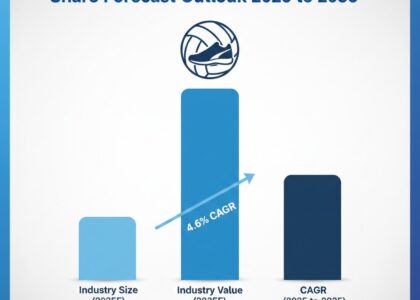From 2025 to 2035, the optical encoder market will continuously grow as industrial automation systems seek motion control technologies with highly tuned accuracy. The industry size is expected to grow from USD 3.6 billion in 2025 to USD 8.7 billion in 2035.
In the age of robotics, automation, and precision engineering, success isn’t just about speed—it’s about accuracy. At the core of many advanced motion control systems lies a component that rarely makes headlines but plays a critical role in defining performance: the optical encoder.
Whether guiding robotic arms on the factory floor, enabling surgical precision in medical devices, or stabilizing camera systems on satellites, optical encoders are the silent enablers of exactness. They don’t move, but they make motion possible—with reliability measured in microns and milliseconds.
Get Ahead with Our Report: Request Your Sample Now!
https://www.futuremarketinsights.com/reports/sample/rep-gb-1721
More Than Measurement: Enabling Intelligent Motion
At a glance, an optical encoder is a sensor. But in practice, it’s a translator—converting mechanical movement into digital signals that control speed, direction, and position. Using light beams and coded discs, optical encoders provide high-resolution feedback that enables closed-loop control across motors, actuators, and rotating systems.
This feedback is what makes automated machinery smart. It allows systems to self-correct, align with sub-millimeter precision, and perform repetitive tasks with unwavering consistency. In industries where errors are costly—whether in aerospace, manufacturing, or healthcare—optical encoders are the invisible line of defense.
Overshadowed by Robotics Hype, Yet Integral to Their Success
While the spotlight shines on humanoid robots and AI-driven machinery, optical encoders rarely share the stage. Yet, without them, motion control would be blind and unreliable. These sensors bring accuracy to robotic joints, ensure smooth transitions in conveyor systems, and maintain synchronization in high-speed applications.
In many ways, optical encoders are the nervous system of modern machinery—constantly relaying data to ensure that every move is intentional, measured, and safe.
Demanding Environments, Dependable Performance
Optical encoders are engineered to perform in a wide range of challenging conditions. From high-vibration industrial settings to sterile surgical rooms and even spaceborne platforms, they must deliver flawless feedback despite dust, temperature shifts, and electromagnetic interference.
Manufacturers are responding with ruggedized housings, compact designs, and optical paths shielded from environmental noise—ensuring consistent performance in the most demanding use cases. Whether rotary or linear, incremental or absolute, optical encoders are built to last without losing precision.
The Challenge of Integration
As machines get smaller, smarter, and more interconnected, integrating optical encoders into complex systems is both a necessity and a challenge. Space constraints, data compatibility, and mounting precision all influence encoder selection.
Moreover, with increasing emphasis on real-time data and edge computing, encoders are now expected to interface with control software, industrial Ethernet protocols, and diagnostic platforms. This evolution is transforming optical encoders from simple sensors into smart devices within the Industrial Internet of Things (IIoT).
Exhaustive Market Report: A Complete Study
https://www.futuremarketinsights.com/reports/optical-encoder-market
A Sustainability Enabler Through Precision
In the push toward sustainable manufacturing and energy efficiency, precision is key. Optical encoders help reduce material waste, optimize energy consumption, and improve machine uptime. By enabling fine-tuned control, they minimize unnecessary motion and extend the life of mechanical components.
In wind turbines, for example, they optimize blade positioning. In packaging lines, they cut down on rejects. In robotics, they make every movement count—supporting more responsible production across sectors.
Invisible, Yet Indispensable
Optical encoders don’t attract the spotlight, but they define the performance of every system they touch. They are the quiet force behind automation’s accuracy—translating movement into meaning, chaos into control.
As industries move toward greater autonomy, precision, and connectivity, the importance of these compact, light-driven sensors will only grow. Behind every seamless motion is an optical encoder—silently shaping the future, one pulse at a time.






